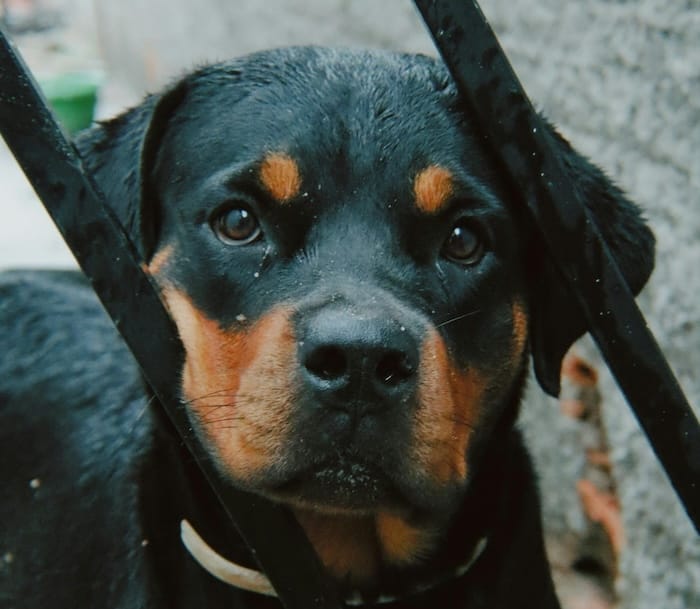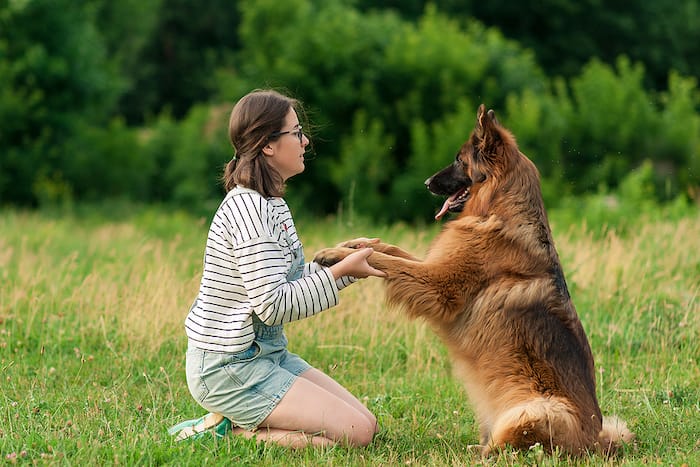These loyal companions are more than just pets; they serve as vigilant protectors, offering a level of security and emotional comfort that a piece of technology simply can’t match. Personal protection dogs have been bred, trained, and nurtured for centuries to offer unparalleled companionship and safeguarding, making them an increasingly popular choice for individuals and families seeking more than what a home security system can provide.
While personal protection dogs might not emit the same high-pitched alarm as your state-of-the-art security system, they offer a more intuitive and dynamic form of protection that responds to threats with both intelligence and empathy. This article will explore the many facets of owning a personal protection dog, from the emotional benefits they offer to the practical considerations families must take into account when choosing the right breed for their needs.

Why Personal Protection Dogs Are More Than Just Security
At first glance, it’s easy to compare personal protection dogs to modern home security systems. Both serve to guard your home and keep you safe. However, personal protection dogs offer a type of protection that no camera or alarm can replicate. While a home security system reacts to potential intruders, a personal protection dog is proactive, often sensing danger long before an alarm is triggered.
Protection dogs are intelligent, emotionally aware animals. They can discern between normal, everyday behavior and suspicious actions, making them a far more nuanced security measure than a machine. For example, while a camera may record an unfamiliar visitor, a personal protection dog can sense subtle shifts in a person’s behavior or energy and react accordingly. This instinctive ability, honed through extensive training, is one of the many reasons why protection dogs are often regarded as irreplaceable in the role of personal security.
One professional dog trainer from Total K9 explains, “A personal protection dog doesn’t just protect you physically; it also gives you peace of mind. These dogs have an unparalleled ability to gauge situations, and their presence alone can be a strong deterrent to would-be intruders.”
The Emotional Bond and Support Offered by Protection Dogs
While the primary role of a personal protection dog may be to provide physical security, their emotional support should not be overlooked. The bond between an owner and their dog is incredibly strong, and for families or individuals who may feel vulnerable, the companionship of a protection dog offers significant emotional comfort.
For many, owning a protection dog gives them a sense of control and security that allows them to navigate daily life with confidence. A well-trained protection dog is always alert but never anxious, which can transfer a sense of calmness to its owner. For those who live alone or in areas where they may feel more vulnerable, this emotional support is invaluable.
It’s not just the knowledge that a dog will protect its owner physically that creates this sense of security; it’s the mutual bond that is formed over time. A personal protection dog doesn’t view its duties as a job but as a natural extension of its loyalty to its family. This connection is what makes these animals so unique in the world of security.
Choosing the Right Breed: What to Consider
Not all dog breeds are suited to becoming personal protection dogs. The decision to integrate one into your family or home environment requires thoughtful consideration of breed characteristics, energy levels, and the specific training needs of each type of dog. Popular breeds for protection work include German Shepherds, Belgian Malinois, and Doberman Pinschers, each offering unique traits that may suit different environments and needs.
When considering a personal protection dog, it’s essential to match the breed’s temperament with your family’s lifestyle. Some dogs, like the Belgian Malinois, are highly energetic and require significant amounts of daily exercise and mental stimulation. This breed might not be the best fit for a family with a sedentary lifestyle. On the other hand, German Shepherds, while also requiring physical and mental engagement, tend to be more adaptable to a range of environments, making them a more versatile choice for many homes.
Breed selection also plays a crucial role in how a protection dog integrates with children and other pets. Some breeds are more patient and gentle with children, while others may exhibit more dominant traits, which require experienced handling. It’s crucial to work closely with a reputable trainer to choose a dog that fits seamlessly into your family dynamic.

The Unique Training Process
The journey of transforming a dog into a personal protector is a long, carefully guided process. Training for personal protection dogs is far more involved than the basic obedience classes many pet owners are familiar with. These dogs undergo rigorous conditioning to not only follow commands but to think critically in high-pressure situations.
From a young age, potential protection dogs are exposed to various environments, noises, and scenarios that simulate real-world threats. This helps them remain calm and focused when faced with unpredictable situations. Training programs also teach these dogs to discern between everyday interactions and genuine threats. Unlike a home security system that reacts to every motion, protection dogs learn to stay relaxed until a genuine risk presents itself, responding only when necessary.
Professional trainers often emphasize the importance of consistent and positive reinforcement in this process. “A good protection dog is one that feels confident and secure in its role,” says a dog trainer from Total K9. “They are trained to understand the difference between aggression and controlled protection. The goal is not to create an aggressive animal but a confident and protective companion.”
The time and effort invested in this training create a dog that is not only reliable in guarding its owners but also a well-behaved and loving family member. The balance between protection and companionship is what makes these dogs so valuable.
Integrating a Personal Protection Dog into a Family Environment
One of the most common concerns for potential owners is how a personal protection dog will fit into their family life, especially when children or other pets are involved. The good news is that with proper training, these dogs can become trusted family members, offering both protection and companionship.
Many personal protection dogs are raised in family environments, ensuring they are comfortable around children, other animals, and daily household activities. Their ability to switch between guarding and being a loyal, affectionate companion is what sets them apart from other security measures. The key to a successful integration is consistency in training and understanding the dog’s natural instincts.
Families adopting a protection dog should work closely with trainers to establish boundaries and routines that fit both the dog’s needs and the family’s lifestyle. Children should be taught how to interact appropriately with the dog, respecting its role within the home while also forming a bond of trust and companionship. With time and patience, personal protection dogs can become integral, trusted members of the family.
The Cost of Owning a Protection Dog: Financial and Emotional Investment
Owning a personal protection dog is a significant financial investment, with the initial cost of acquiring a trained dog often reaching thousands of pounds. This figure doesn’t include ongoing costs, such as food, veterinary care, and maintenance of training. For some, this may raise the question: is a personal protection dog worth the cost compared to a traditional home security system?
The answer lies in the unique, irreplaceable benefits these dogs offer. Unlike a static home security system that requires constant upgrades and monitoring, a protection dog evolves with its environment. As your needs change, so too can the dog’s training, adapting to new challenges and threats. More importantly, personal protection dogs offer emotional and psychological support that no machine can replicate.
There’s also the emotional investment to consider. While the financial commitment may be high, the bond between owner and dog is priceless. Protection dogs are not simply security devices but beloved family members, offering years of companionship, loyalty, and protection. For many owners, this bond far outweighs the initial cost of the dog and its training.
Personal Protection Dogs in Urban Settings
Urban environments present unique challenges for personal protection dogs. City life is full of stimuli—crowds, traffic, noises, and confined living spaces—that can be overwhelming for some dogs. However, with proper training, personal protection dogs can adapt to these environments, offering their owners both security and peace of mind in bustling urban landscapes.
In cities, personal protection dogs are particularly useful for individuals who may feel vulnerable walking through unfamiliar or less secure areas. Their presence is often a deterrent to potential threats, making city life more comfortable for owners who rely on their protection. Additionally, these dogs are trained to remain calm and composed in the face of urban chaos, ensuring they are reliable guardians even in unpredictable settings.
Conclusion: The Unmatched Value of Personal Protection Dogs
In an increasingly digital world where home security systems are becoming more advanced, personal protection dogs remain a trusted and effective means of safeguarding families and individuals. Their unique combination of loyalty, intelligence, and emotional awareness makes them not just protectors but beloved companions. While the financial and emotional investment may be significant, the benefits of owning a personal protection dog far surpass what technology can offer. For many, these dogs provide a sense of security that goes beyond alarms and cameras, offering both peace of mind and steadfast loyalty. In a world full of uncertainties, a personal protection dog stands as a living, breathing symbol of safety and companionship.
